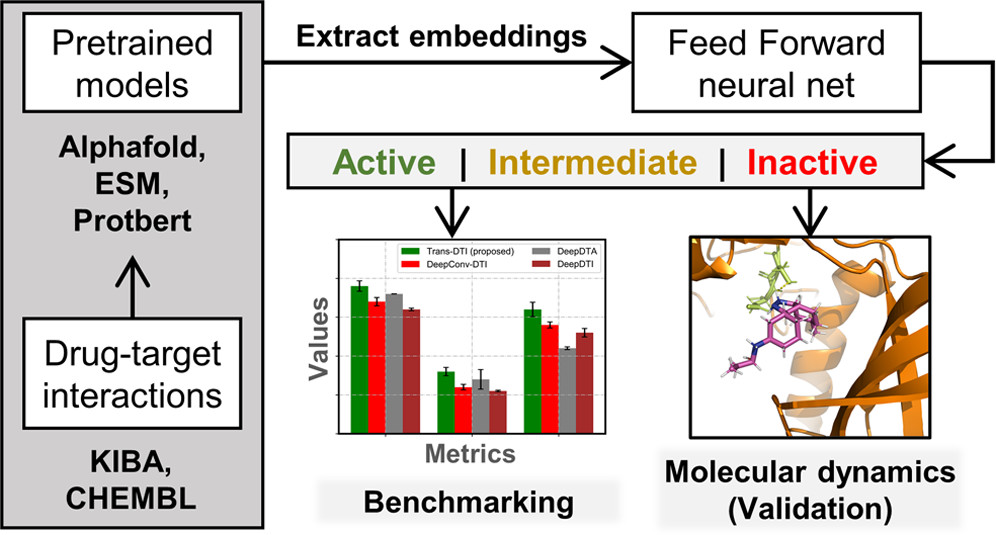Transformer-based molecular embeddings for modeling drug-target interactions and recommending probable leads
Date:

About the Talk
In this talk, I presented TransDTI — a transformer-based language model approach for identifying and predicting drug–target interactions (DTIs). This work aims to overcome the bottlenecks in traditional DTI discovery, offering a powerful, in silico method for accelerating the drug development pipeline.
Core Contributions
- TransDTI introduces a multiclass classification and regression workflow that predicts DTIs as active, inactive, or intermediate.
- Leveraging large-scale DTI datasets, our transformer-based models significantly outperform existing methods like DeepConvDTI, DeepDTA, and DeepDTI.
- The models demonstrated improvement in metrics such as:
- Area under ROC (auROC)
- Area under Precision-Recall (auPR)
- Matthew’s Correlation Coefficient (MCC)
- R² score
- Validation was done using molecular docking and simulation, confirming novel interactions, particularly for MAP2k and TGFβ.
Why This Matters
The traditional process of identifying DTIs is slow, manual, and expensive. Our solution, powered by transformers, enables faster and more accurate predictions from sequence data alone — a major step toward personalized therapy and AI-driven drug recommendations.
Visual Highlights
TransDTI Workflow Overview
Comparative Model Performance

Molecular Docking Visualization

Audience Takeaways
- Strong interest in integrating TransDTI with hospital and clinical recommendation systems.
- Active discussion around explainability and use of attention maps in understanding DTI mechanisms.
- Feedback suggested applying this model to rare diseases and orphan drug scenarios.
Conclusion
TransDTI represents a practical and scalable solution for next-gen DTI discovery. Its implications span drug repurposing, precision medicine, and clinical decision support. This talk emphasized the power of transformer models in biomedical research and the urgent need for AI tools in pharma workflows.
For access to the paper or code, or to collaborate on related research, feel free to contact me.
